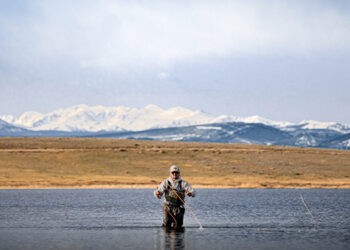It’s hard to stray away from the meat and potatoes of sports when it comes to intramurals, or at least that is how Oscee Wheatfall, assistant director of intramural sports at Texas A&M University, described their program.
Finding ways to encourage students to try out unique sports can be a challenge, especially when football, basketball and soccer are the other options. “Being in Texas, football is king,” explained Wheatfall. “No matter what we do or when we do it they are always going to clamor for football.”
The challenge then arises of what unique sports to offer. Adam Walsh, assistant director of intramurals at Colorado State University said they try to run ideas by other universities to see what is working for them or look at national trend growth and decline rates.
“We try to figure out what is hot nationally, and when you look at a certain event you want it to have staying power if you decide to run it,” said Walsh. “You wouldn’t want to spend a lot of time and money on something that only might be popular for a year and no one wants to do it after that. That is why you like to see if other schools are running it, or what they have experience with so when you roll it out you might be a little more prepared.”
Due to the supply and demand rate for facility space, it can be difficult to add unique or smaller sports if the most popular sports need space first. Christopher Schmoldt, the assistant director for intramural sports at Florida State University, has found by using facility space outside of the university they can incorporate more of the smaller sports to give students more opportunities.
For a small fee, students at Florida State can participate in Sky Zone dodgeball at an indoor trampoline facility. The event is held in a tournament style as a way to see if it would be successful as a league sport. They can also play in a golf scramble at the nearby club. “We are charging students, but we are just paying it back to the facility that is sponsoring it, and it only takes minimal to no staff for us to run.”
Walsh explained the university aims marketing strategies for intramurals toward the unique sports as a way to get new participants involved. They create short videos to promote an upcoming tournament or league for sports that may not get as many people coming out for it like they do for sports like football or soccer.
“When we create our promo videos, we want to show our table tennis tournaments, bowling, badminton and some of those things you might not think of as intramural sports,” said Walsh. “The people that are going to play flag football are going to come play flag football. We don’t really need to market to them. We want to market to the underserved that might not participate in our programs otherwise.”
Almost every sport has specific equipment necessary to play, which makes it hard for newly invented sports to get a foot in the door. Most universities don’t want to pay for the equipment if a program will just decline in participation throughout the upcoming years. However, Florida State has found that most of those sports just want people to try them out, and the companies are willing to send over the equipment at no cost.
“We have Kan Jam and Spikeball because they were popular sports to come out recently,” said Schmoldt. “The companies reached out to us to send us the equipment for free. They said, ‘Hey we would love for you guys to try this out and see if the students on campus would like it.’ We don’t get a big number of people participating in those sports, but we offer them when we offer sand volleyball so it doesn’t cost us anything when we run them simultaneously.”
An important aspect to any intramural program is the ability to reach as many students as possible. At Texas A&M, Wheatfall said they have a complete open door policy when it comes to students suggesting sports they want to see played. The longevity of a program depends on the demand of the students.
“If a student wants to try a sport, they mainly just need to get in touch with us, and if we see it can work then we definitely try to implement it,” said Wheatfall. “First, we would start off with a tournament style structure to see how it goes. If there is a huge outcry of people enjoying it, then we will look into transferring it into a league sport to hopefully be played over some months.”










